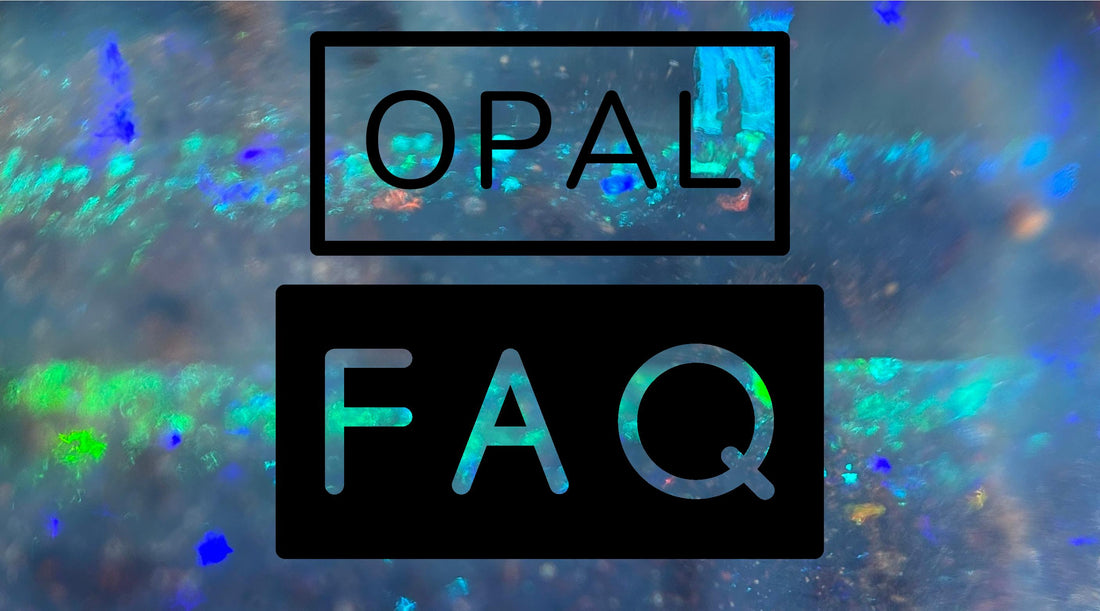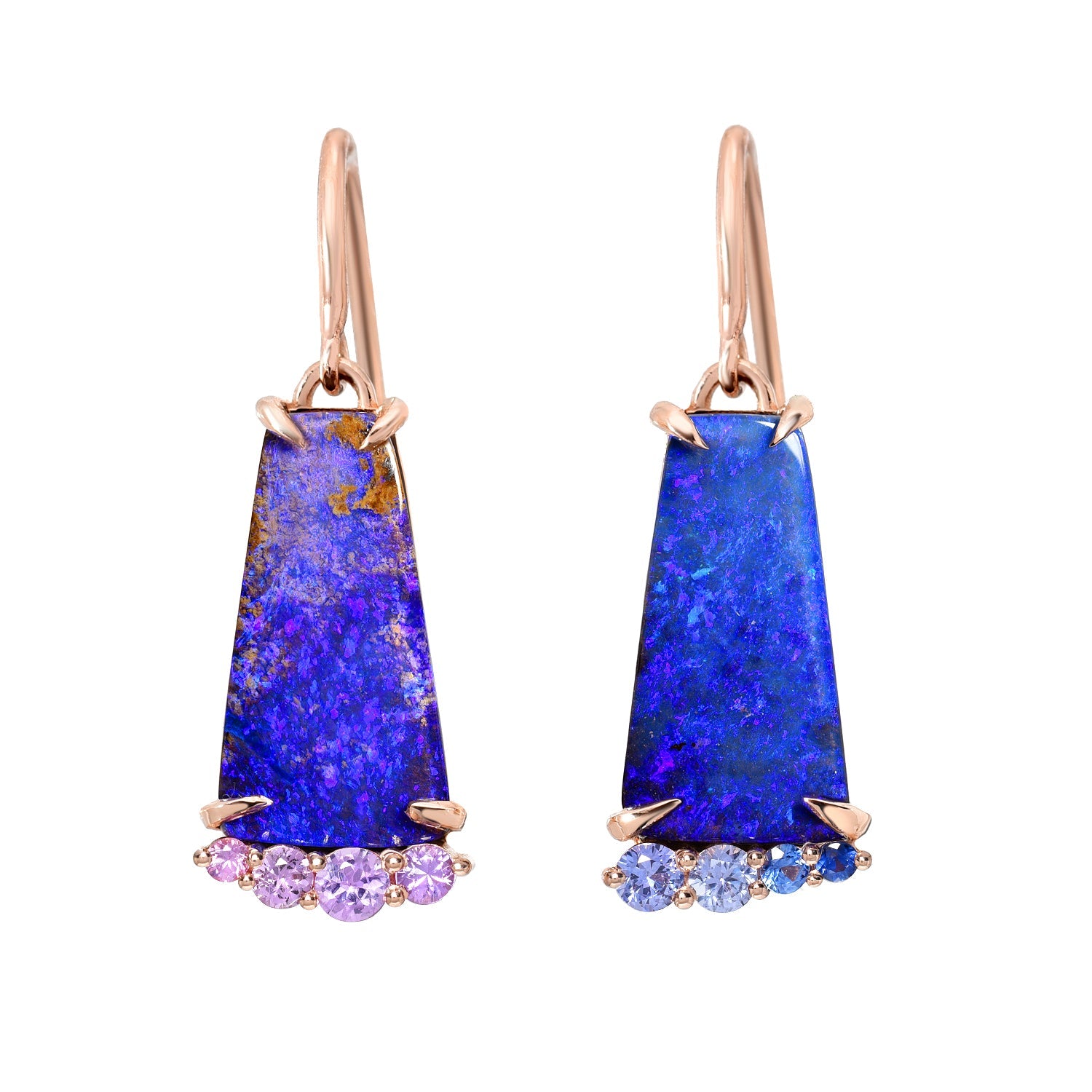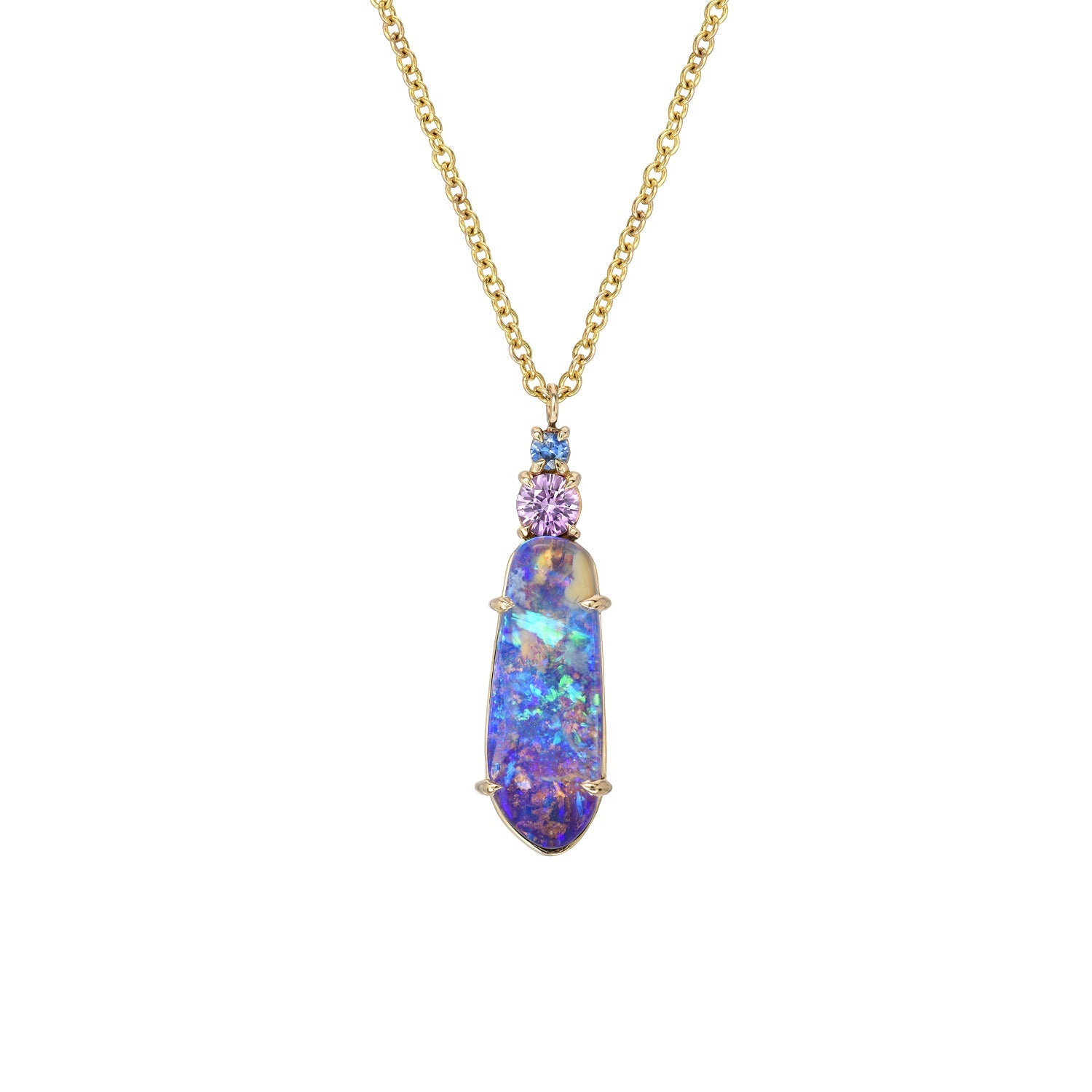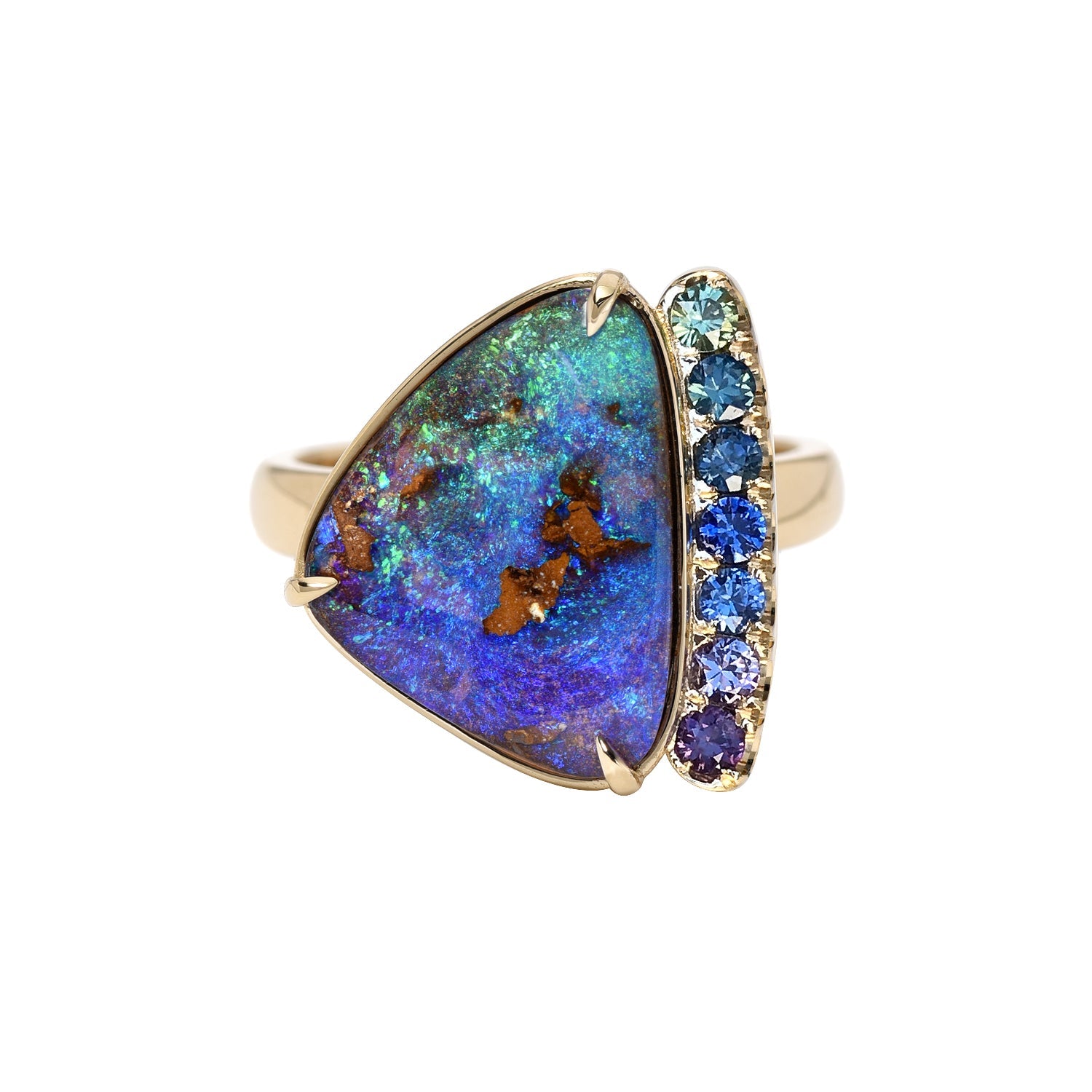
Opals: Most Frequently Asked Questions
luis gomezShare
In this article we’re going to address some of the most pressing questions when it comes to Opals — those frequently Google searched queries that seem to be top of mind. Questions like, what are Opals? Is it hard to maintain Opals? What types of Opals are there? Why are Opals so expensive? These are just some of the many questions we’ll answer in this top Opals FAQ.
An Opals FAQ
Q: What is an Opal?
A: Opal is a hydrate amorphous type of silica — these types of stones have a water content that may range from 3% to 21% of their weight. On account of these characteristics, these types of stones are classified as mineraloids. They are mainly used for jewelry making.
Q: Are Opals Valuable?
A: Generally speaking, yes, and Opals with black or dark body tones are more valuable than those with white, crystal, or light hues. For example, a black precious Opal can be valued at more than $15k per carat.
Q: What type of Opals are there?
A: There are 3 types of Opals classes. Within those 3 types, you can find sub-genres. These 3 main types are:
- Precious Opals: Opals that display “play of color” - the spectral range of hues that result in a constantly shifting appearance. These Opals are typically employed for jewelry purposes.
- Common Opals: Opals that lack "play of color" but can still form in beautiful, more static hues. This type of Opal is often found in similar geographies as precious Opal - particularly those with volcanic activity.
- Synthetic Opals: laboratory breed Opals that are mainly used for costume jewelry and advances in technology.

Q: Are Opals worth more than diamonds?
A: Not exactly. However, that’s not an apples to apples comparison. Getting your hands on an Opal or diamond of lower quality is relatively easy. As the rustic diamond market has proven, even a low quality diamond can fetch a rather steep price. Opals, meanwhile, will generally have to display some premium characteristics to demand higher prices. Access to a high quality diamond or gem quality Opal is much more difficult as these types of gems, from either family, are far more rare, and prices can skyrocket accordingly.
Q: Why are Opals expensive?
A: Not all Opals are expensive, only premium quality precious Opals. The more intense the color of the Opal, the broader its spectrum of colors, and the darker the body type the more expensive it’s bound to be. Opals are predominantly found in Australia, and eventually those mines will be depleted. Their value is tied to supply and demand, and in Opal's case said supply is limited.
Q: What do Opals symbolize?
A: Depends on the culture and the epoch. In some cultures, mainly those of the Mediterranean - Rome, Greece, Italy, etc - Opals used to signify “Faithfulness and Confidence.” In India and Eastern regions, Opals were used as warding stones and even employed in the construction of effigies - as eyes - due to their “power” against evil spirits.
Q: Opals are the birthstone of which month?
A: Opals are the birthstone of October. They share that month with tourmaline. This Australian Opal necklace merges both October birthstones:
Aphrodite Boulder Opal Gold Necklace by NIXIN Jewelry
Q: How do you tell if an Opal is real?
Most Opals, at least those that are real and not synthetic, exhibit some irregularity. They may have a curved or bumpy topography or a natural back-formation. Lab-created synthetics usually look more “perfect” as do man-made stones like Opal doublets (made of real Opal components, but manufactured). You can typically spot an Opal doublet because it has a very clean linear seam between the two layers of material where they are glued together. Unlike an Opal doublet, a natural boulder Opal is likely to display a more jagged seam between the host rock and the precious Opal. Once set, a great way to tell if an Opal is real is by looking at its back. Unless there’s a logical design intention for it, if Opal is set in such a way as to hide the rear, then there may be reason to be cautious.
Q: Where do most Opals come from?
A: 95% of Opals are mined in Australia, in the area near New South Wales. The rest are found in places like Ethiopia, Mexico, Brazil, Nevada, and even on Mars.

Lightning Ridge, Australia --- One of the Most Famous Opal Mining Towns in The world
Q: What are Harlequin Opals?
A: This is a highly sought after pattern found in black Opals. In fact, it is the rarest pattern of all, and miners may spend a lifetime hoping to find one. To truly fit the criteria of a Harlequin Opal, the stone must display a mosaic-like pattern of regular angular patchwork, and cover the entirety of the stone. When the right criteria is met, a true Harlequin Opal can command prices of up to $30k per carat.
Q: Are Opals bad luck stones?
A: This is a common misconception that arose in the late 19th century. A misunderstood novel by Sir Walter Scott, titled, “Anne of Geierstein” is largely to blame. For ages, Opals were among the most prized stones in existence. In the Middle Ages, they were called “magician’s stones” due to their supernatural powers. Shakespeare called Opals, the “Mother of Stone” because they were, to him, the most striking gemstones in existence.
Q: What are the most expensive Opals?
A: The most sought-after Opals are gem quality black Opals. If within that same stone, you add a full spectrum of color, including red (the rarest), with spectacular vibrance and perhaps a Harlequin pattern, said stone will cost you handsomely. These are incredibly rare stones - some of the most sought after in existence.
Q: What energy does Opals have?
A: In the metaphysical world, in the New Age culture, Opals act as prisms within the aura. They help soothe and clear the body of bad emotions and boost a person's general well-being and joy.
Q: Can you give Opals as engagement rings?
A: Yes! Not only that, but you may be surprised to learn that diamonds only became a popular form of gemstone in the mid-15th century. So much so that the first (famous) diamond engagement ring was offered by Archduke Maximillian of Austria to Mary of Burgundy in 1477. Before this period, other gemstones were more commonly used in engagement rings — including Opals.

One of the world's first diamond engagement rings
Q: What famous historical figure loved Opals?
A: Though there were many, one of the most prominent was Cleopatra. It's well known that the Egyptian queen was a lover of emeralds (then mined in Egypt), but she was also a huge fan of Opals. So much so that her love affair with Marc Antony was partly galvanized by the former's constant Opal gift giving. The British crown also has its own varied history with Opals, due to the fact that they come from Australia - they were a renowned favorite of Queen Victoria’s.

Cleopatra - one of history's biggest Opal fans
Q: Are Opals hard to care for?
A: Opals are more delicate, due to their water content, than some other gemstones. They can be worn regularly just so long as you follow some basic rules. With proper care, Opals can last a lifetime — if you’re interested in how to take care of Opals we have this article with a step-by-step guide to help you out, just follow this link.
Q: Where can I find one of a kind Australian Opal Jewelry?
A: You’re already there. Here at NIXIN Jewelry, we specialize in Australian Opal Jewelry that nobody else has. Come find your One of A Kind.




